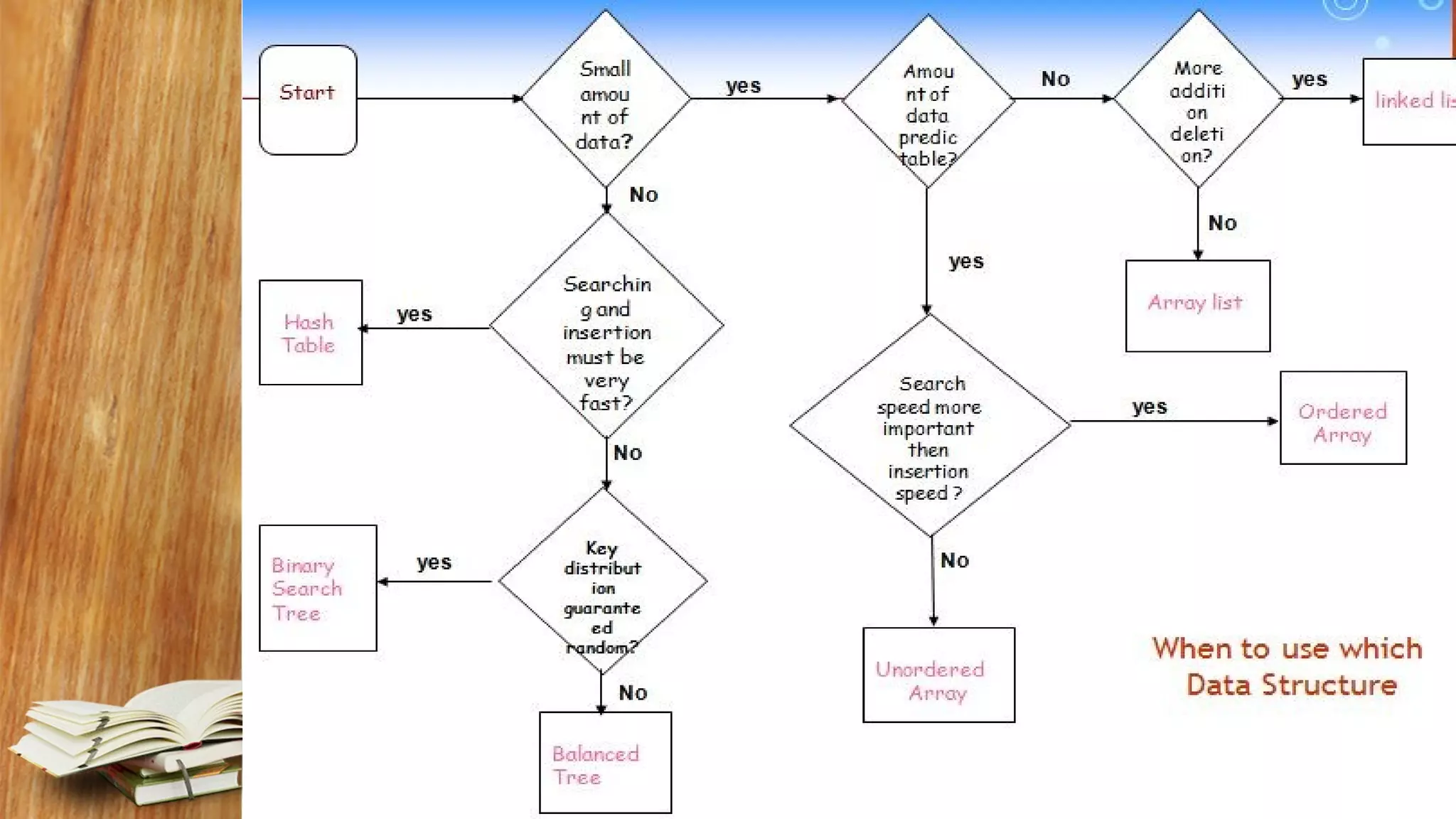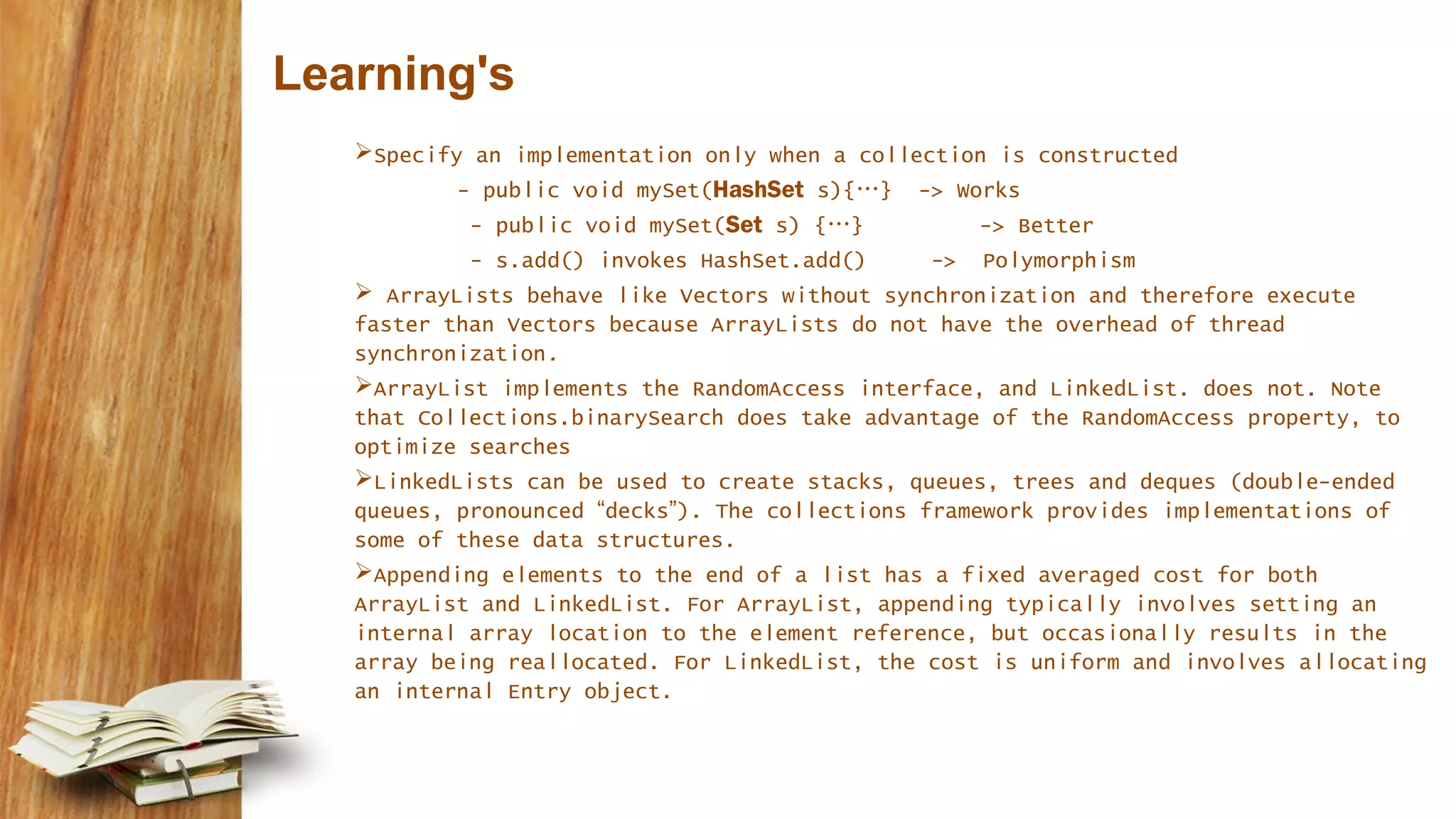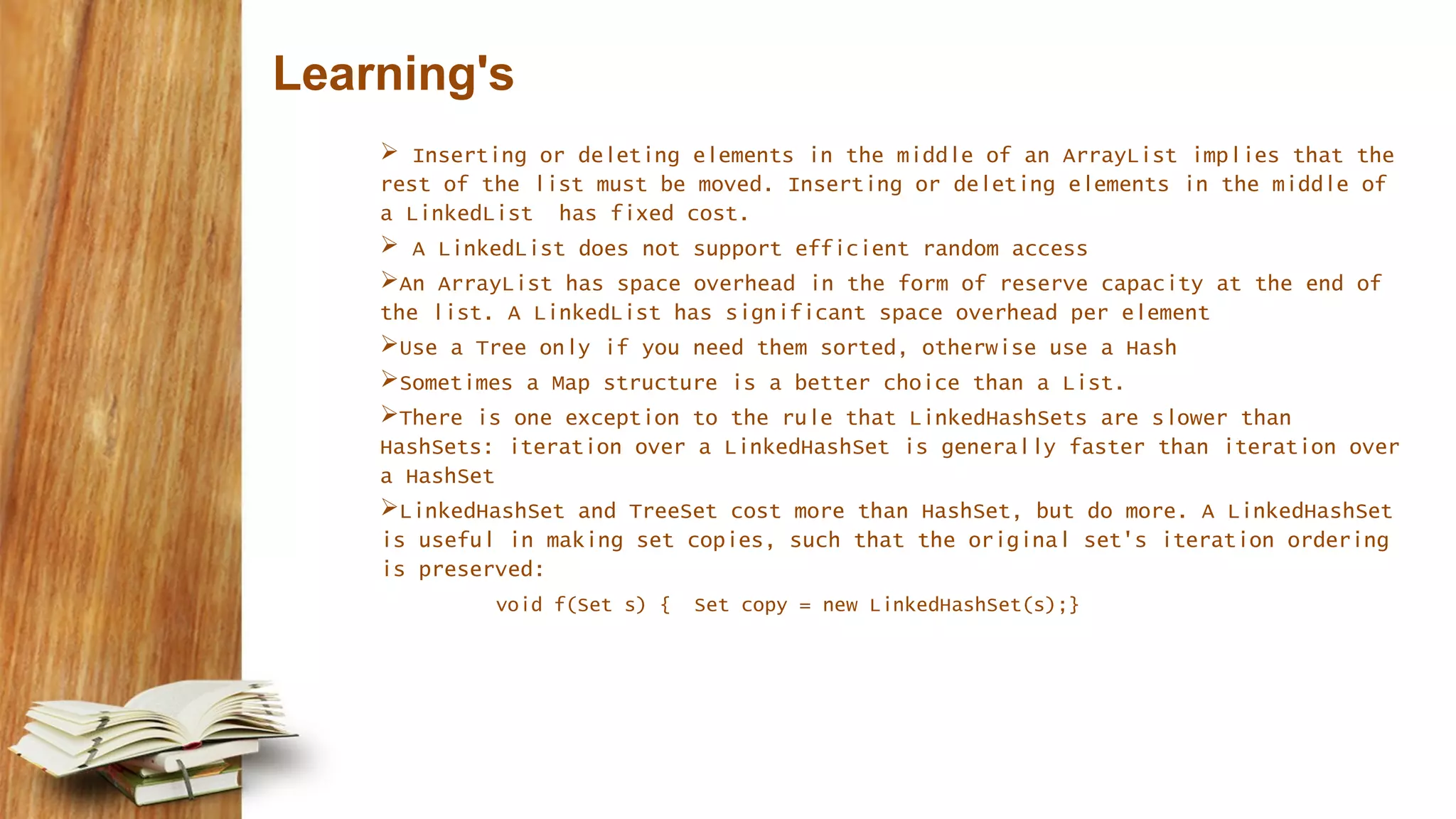This document provides an overview of the Java Collections Framework. It discusses core collection interfaces like List, Set, and Map and their common implementations like ArrayList, HashSet, and HashMap. It also covers sorting collections with Comparable and Comparator, searching collections with binary search, and using utility methods in the Collections class. Examples are provided to illustrate usage of various collection classes and methods.

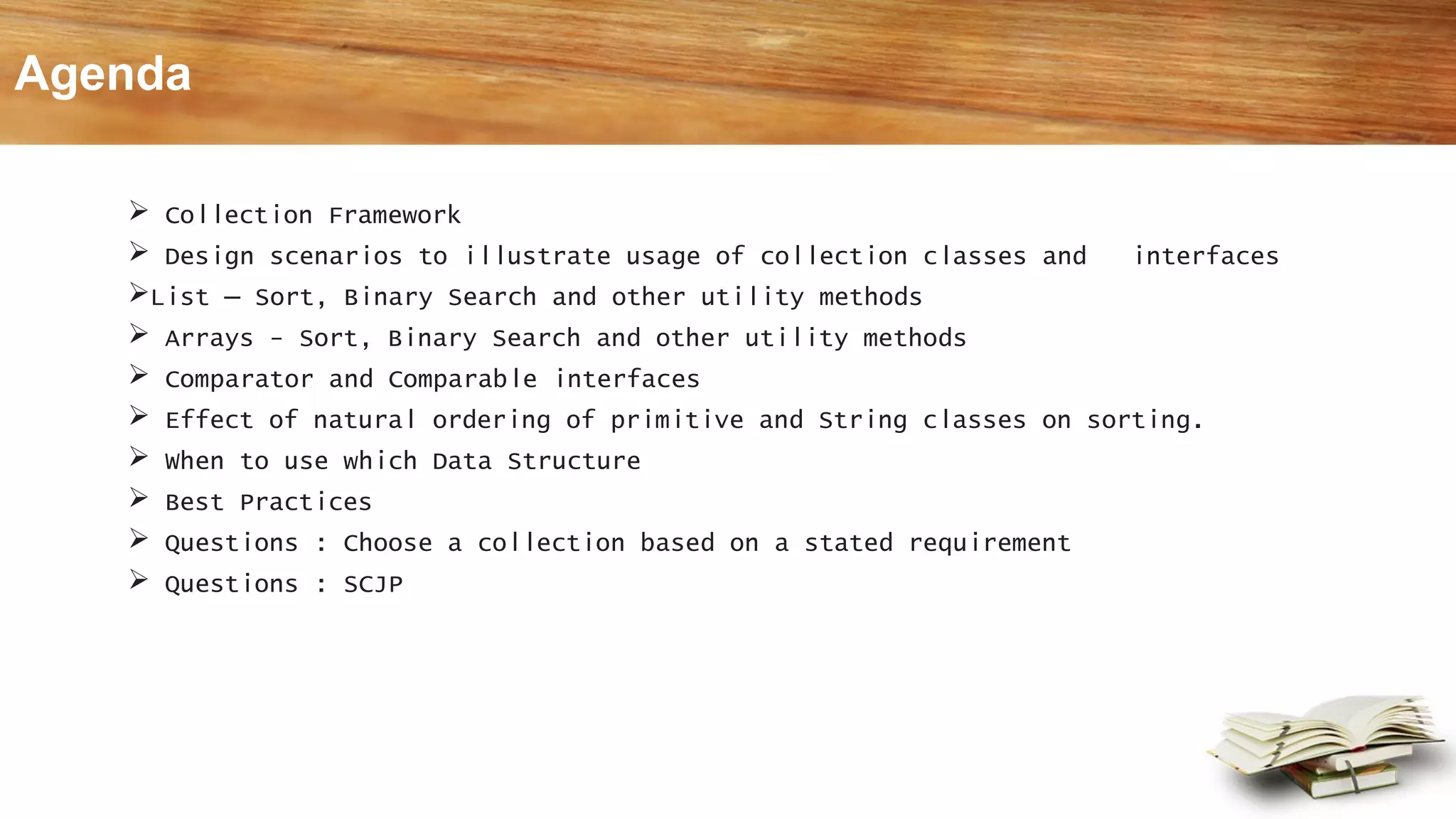
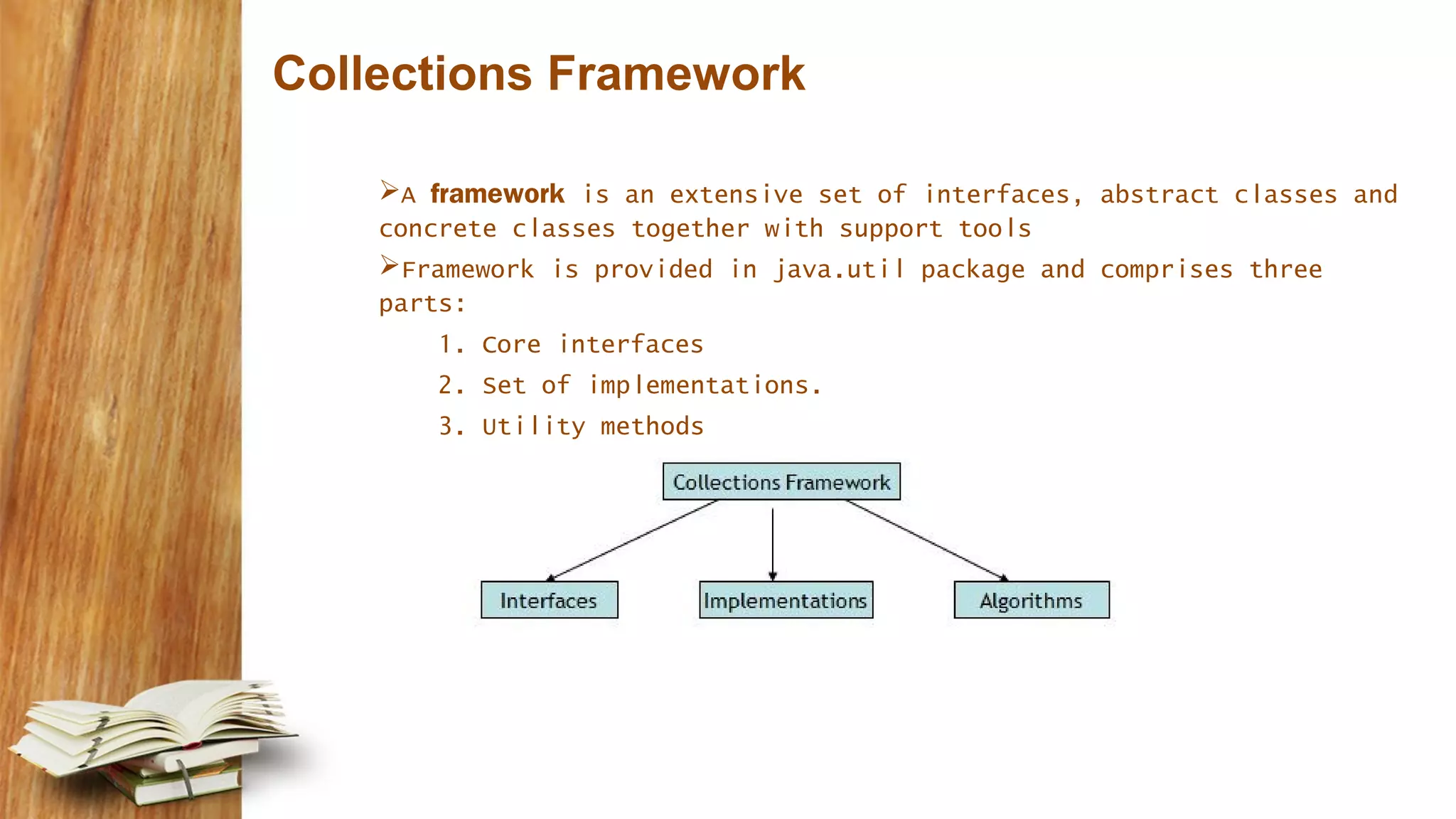
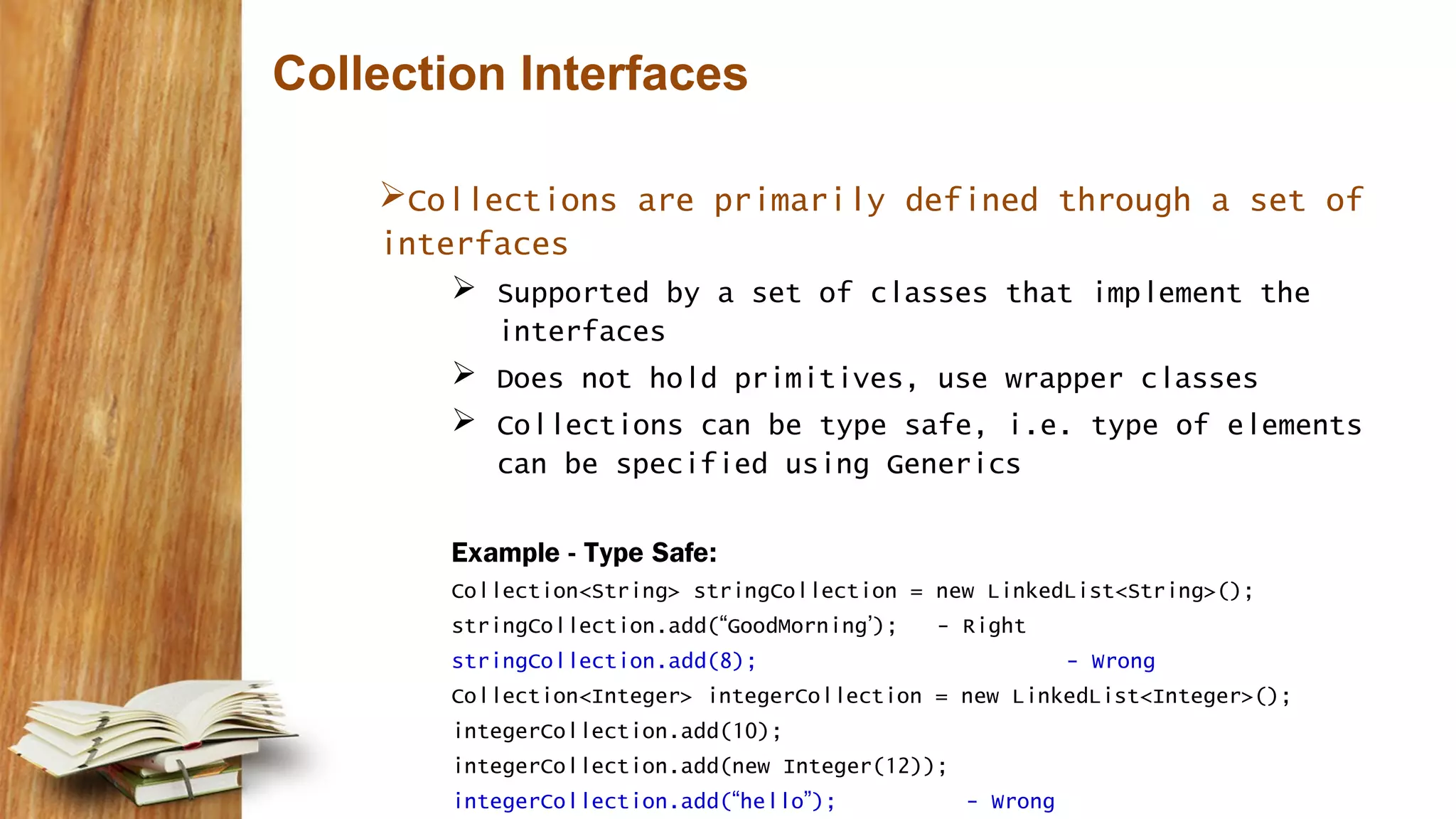
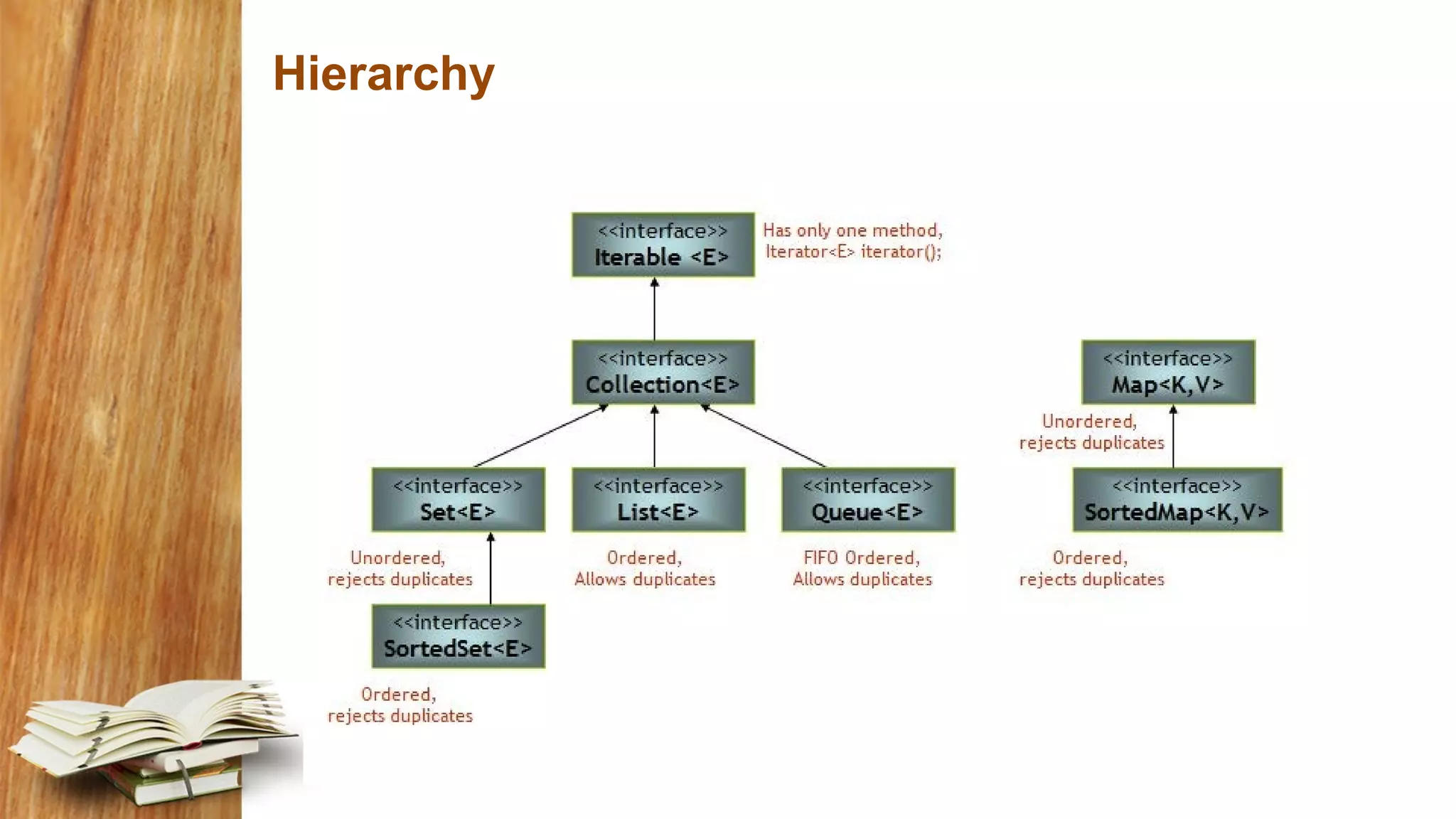
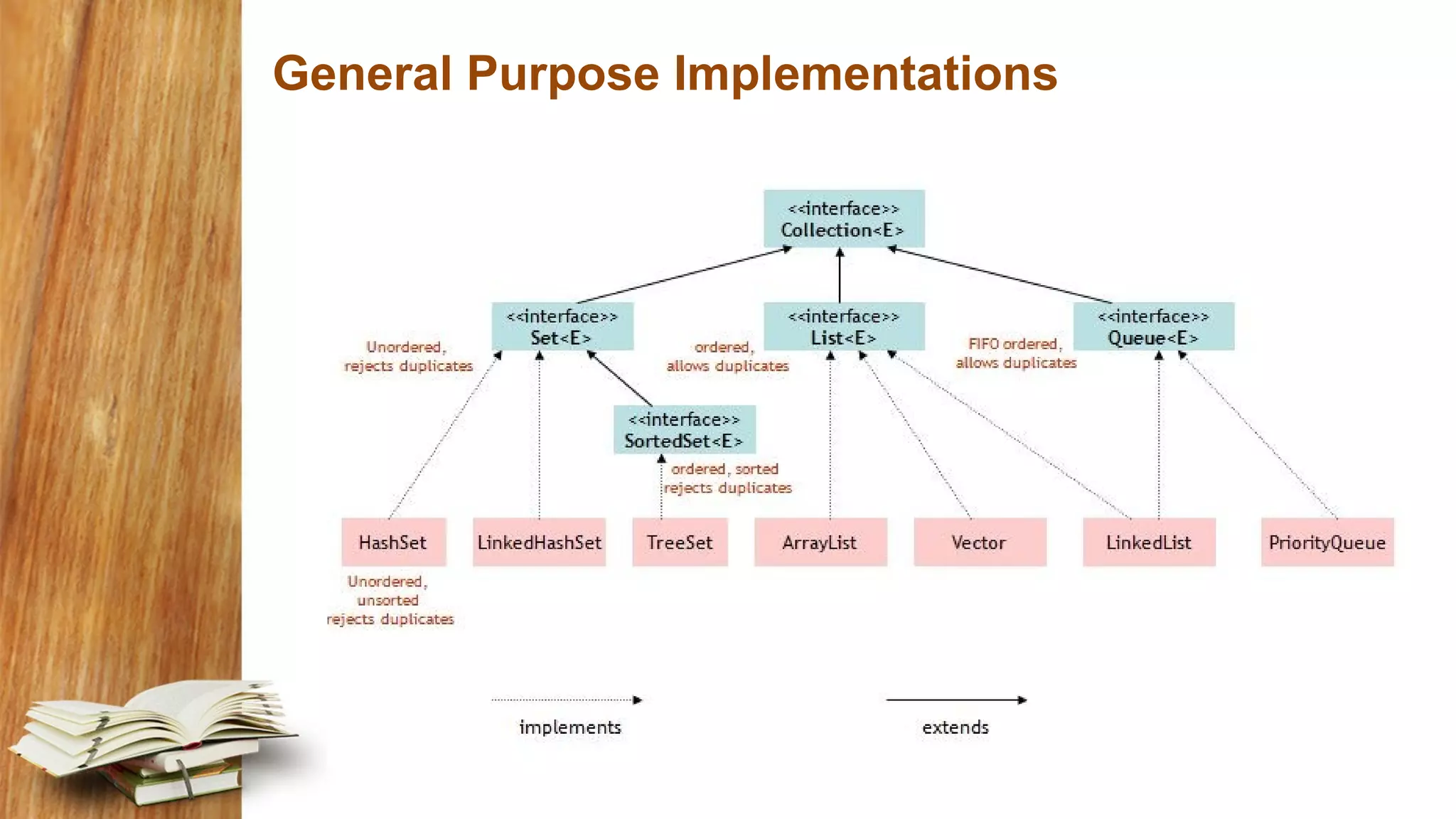
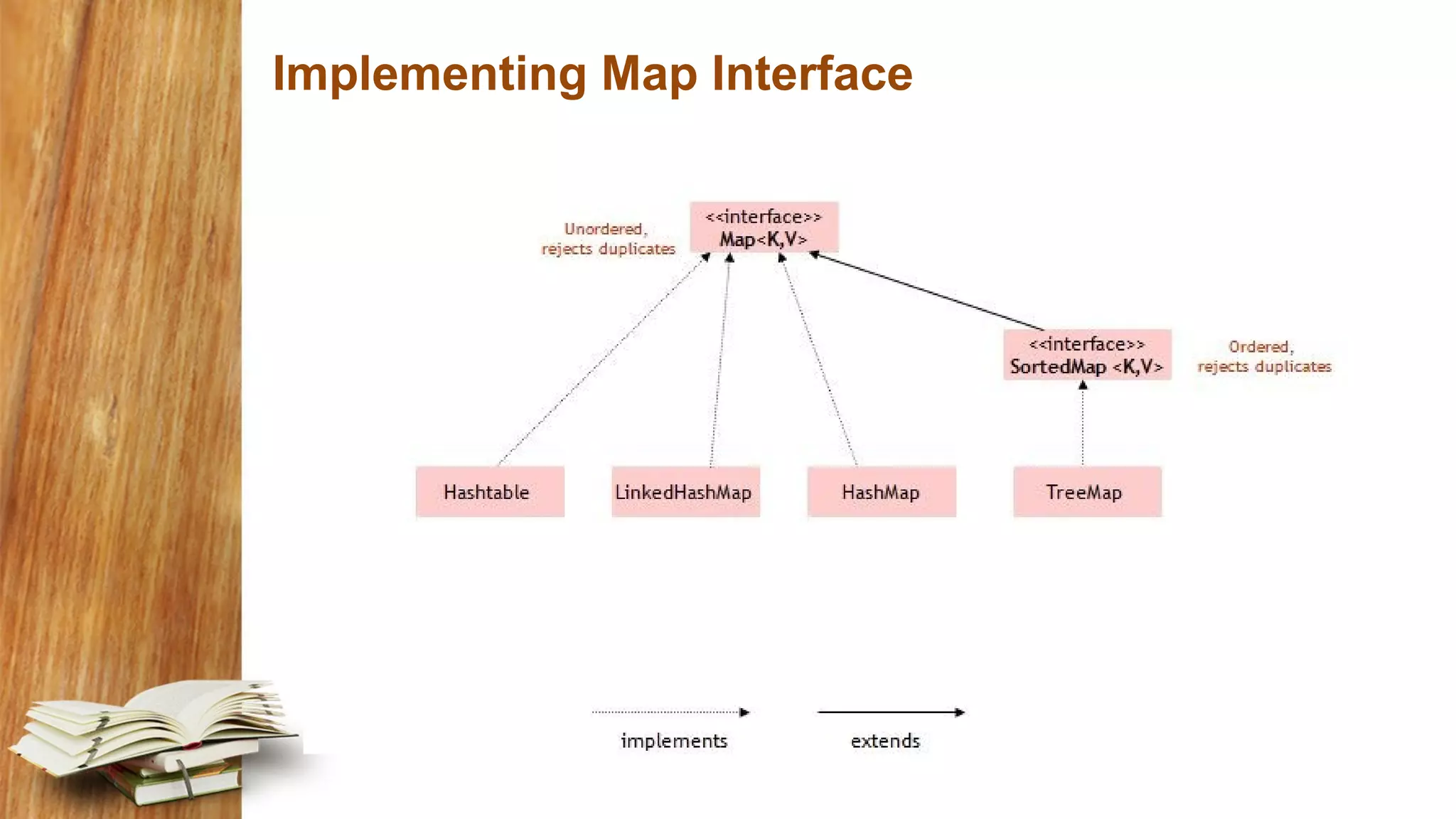
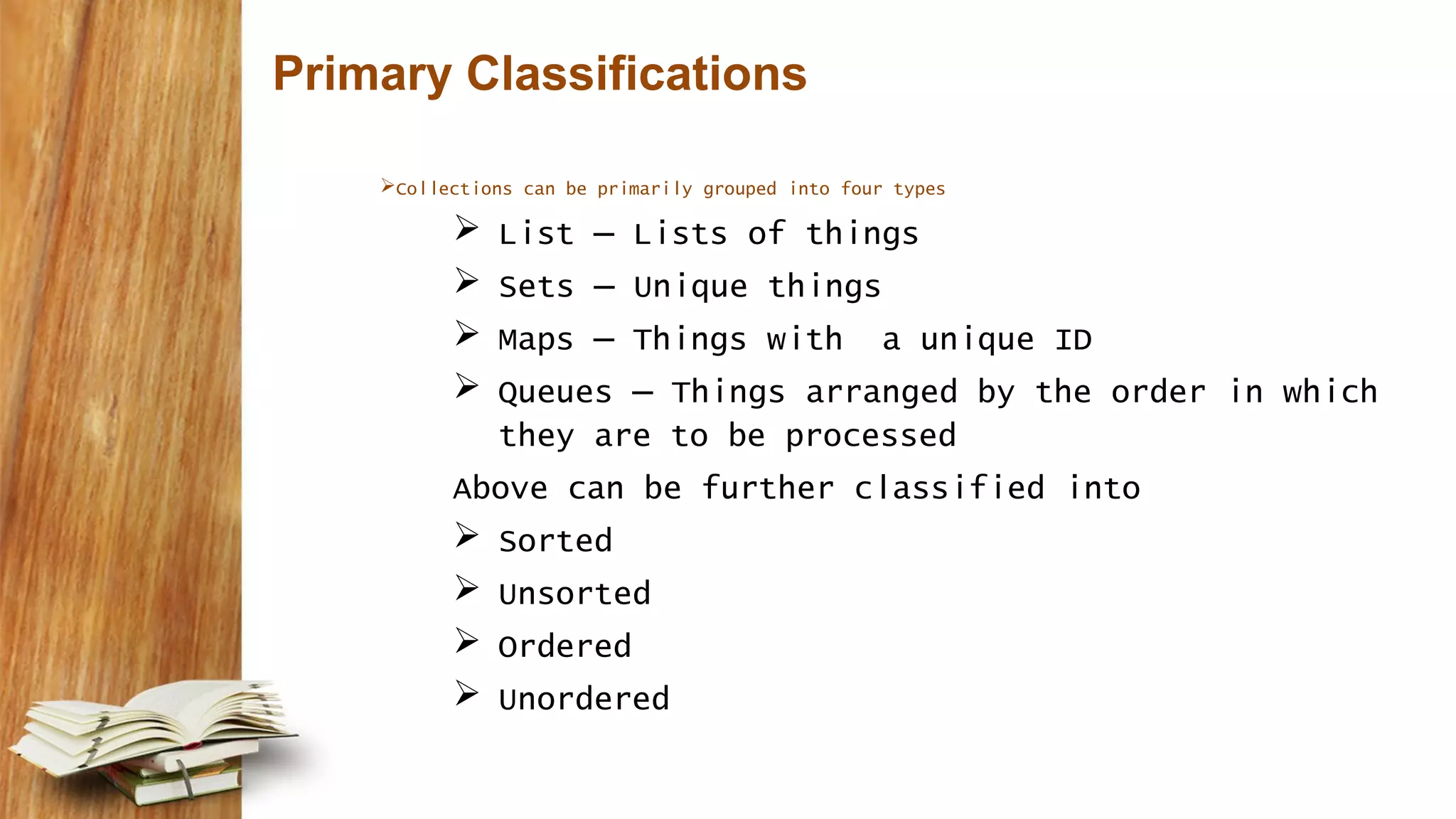


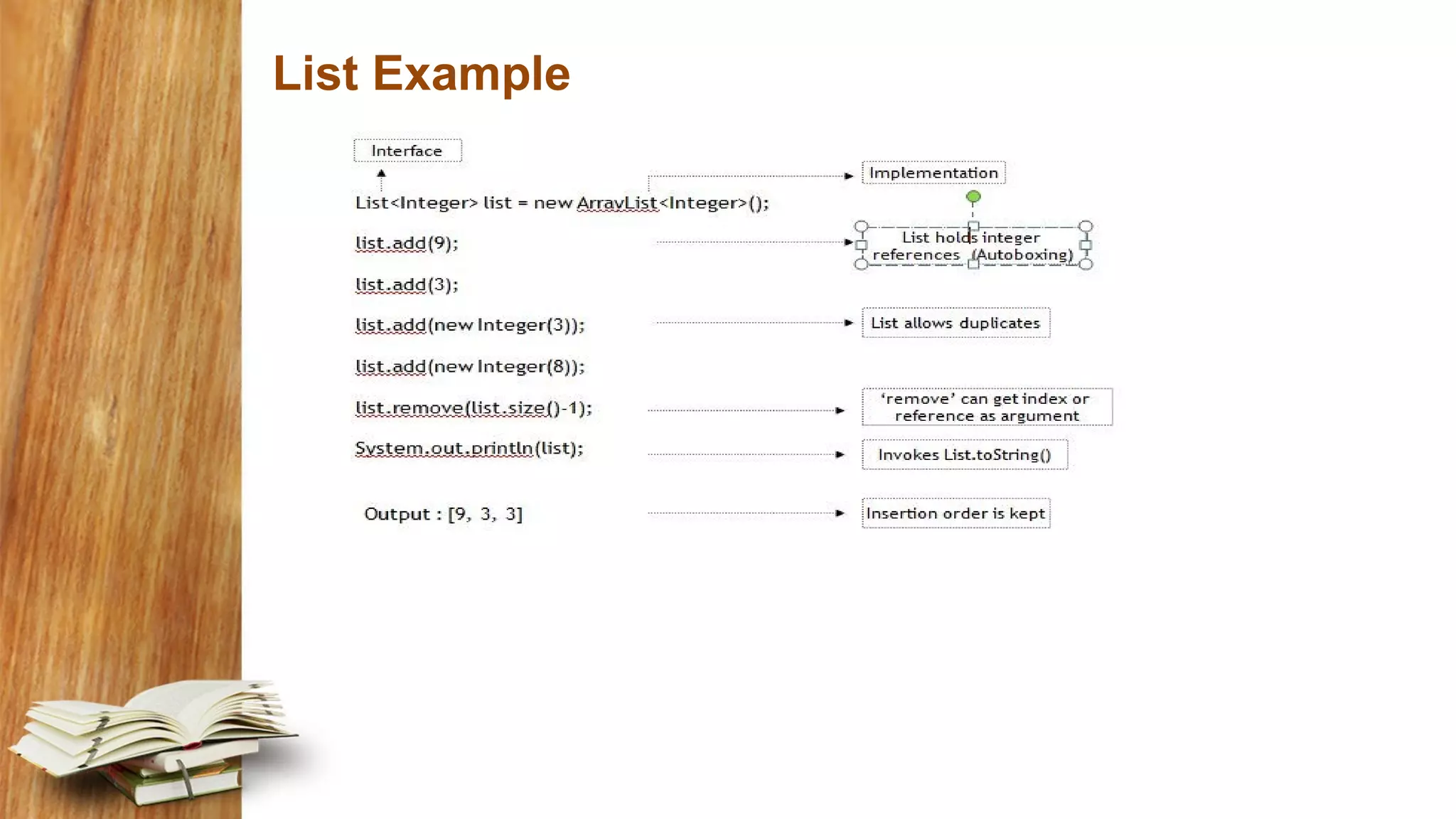
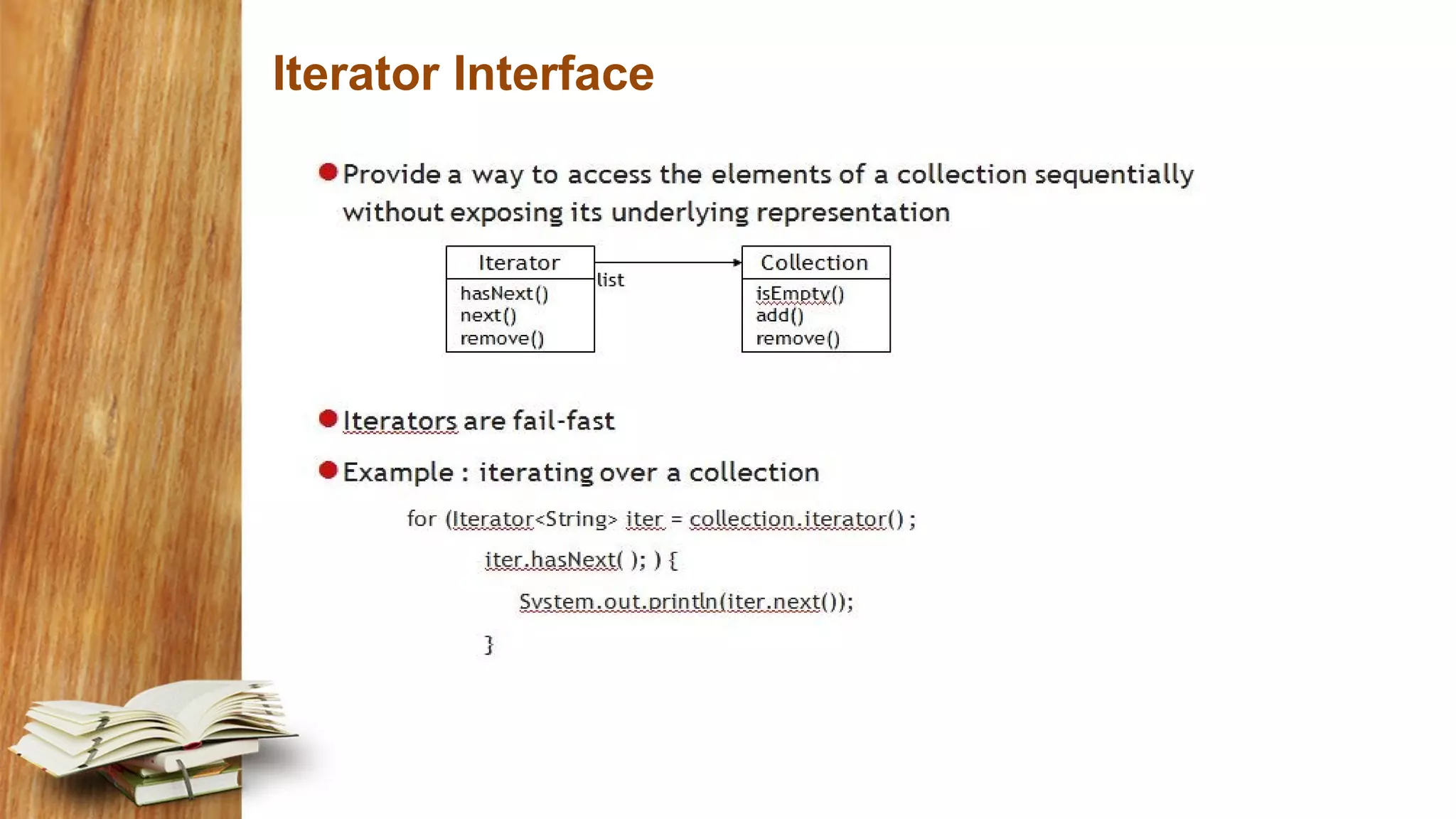
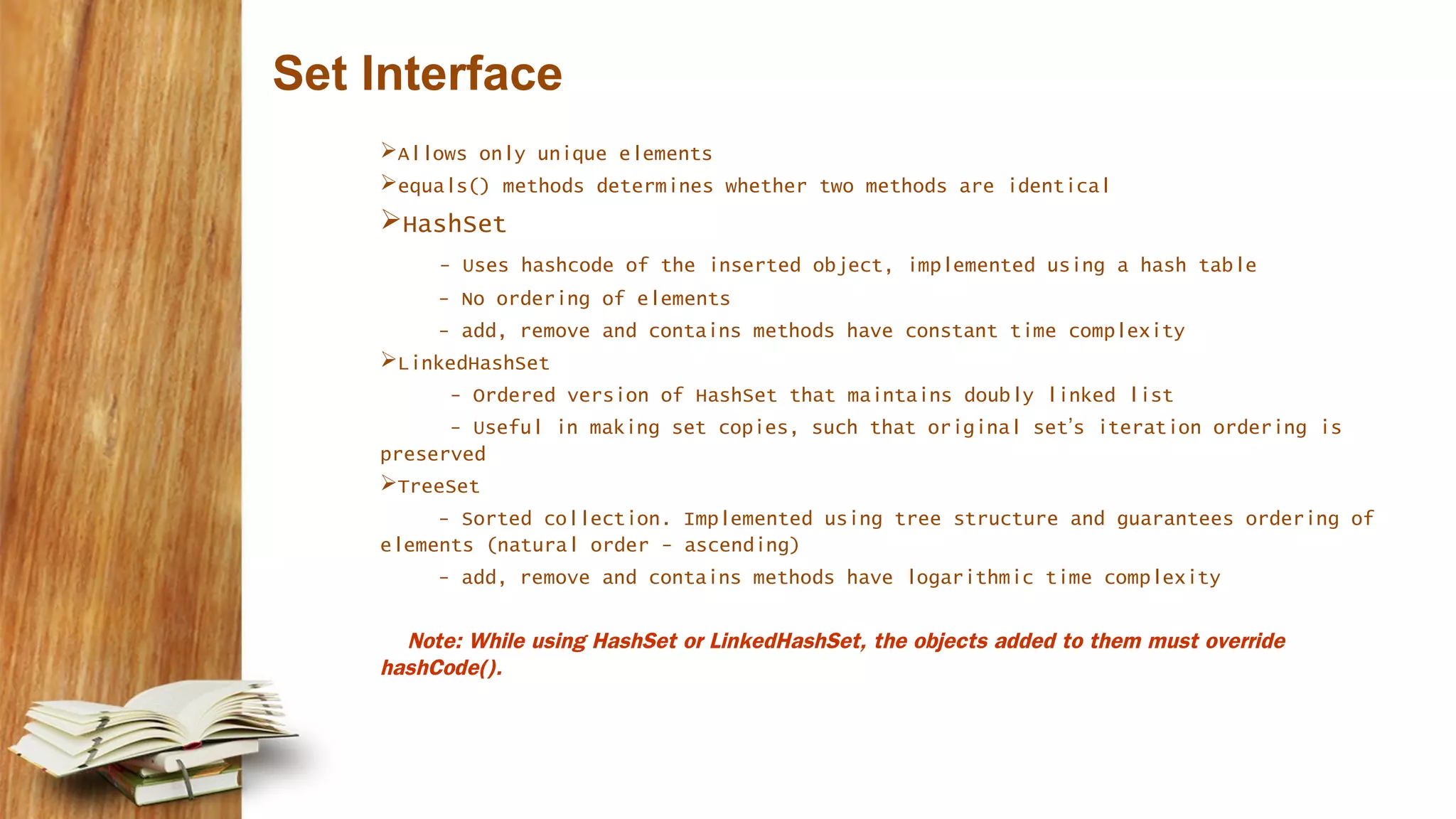
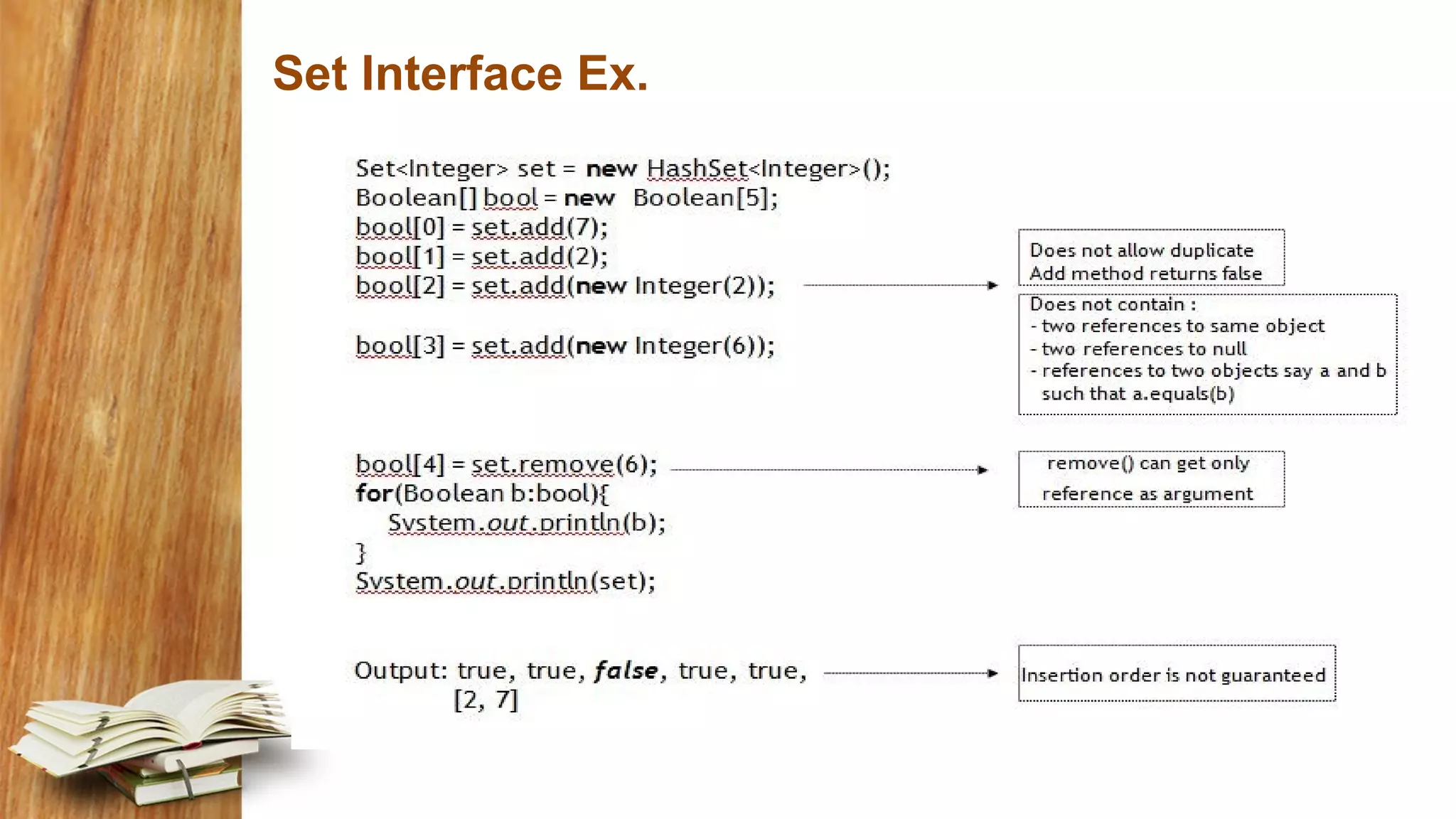
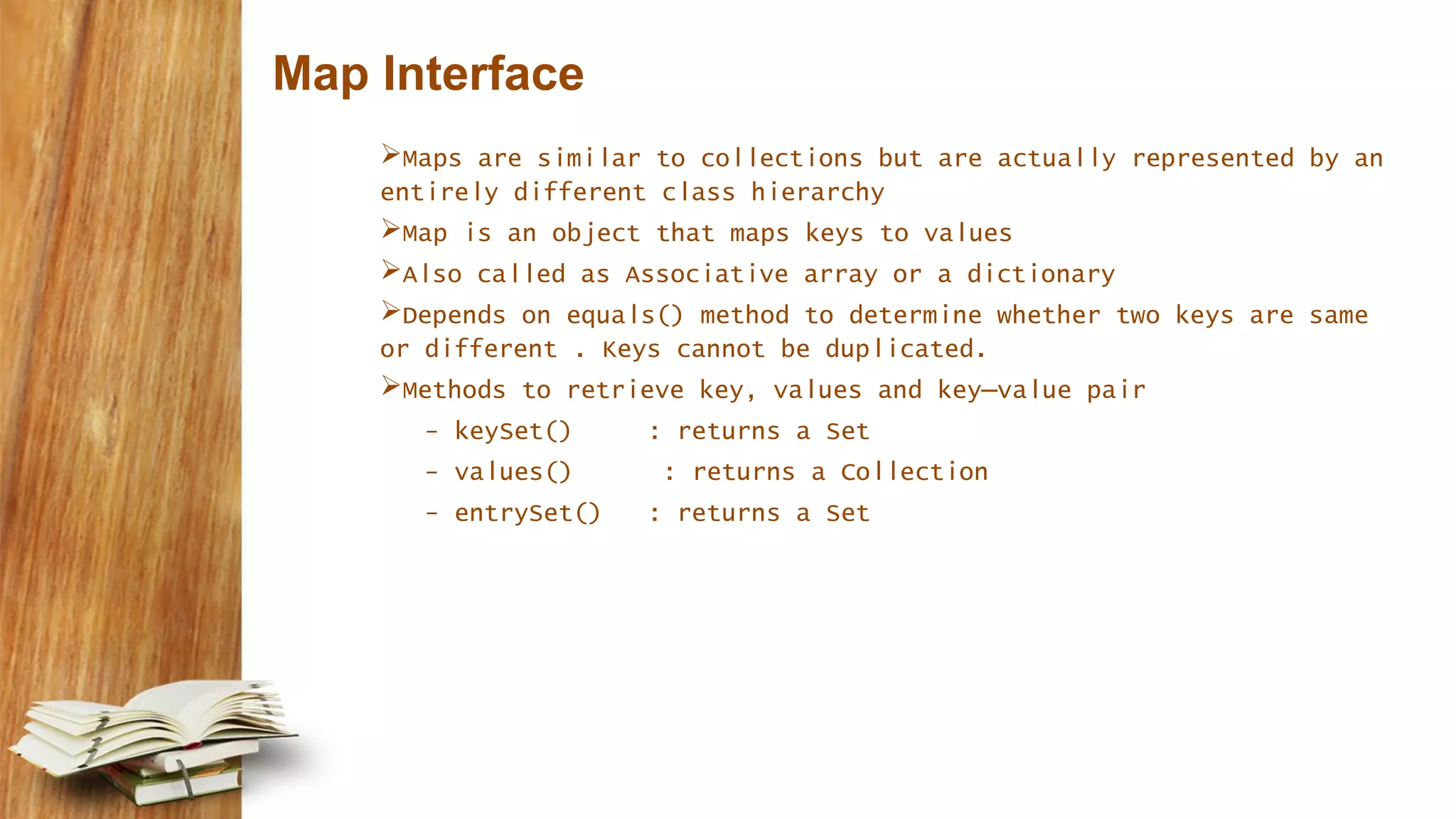
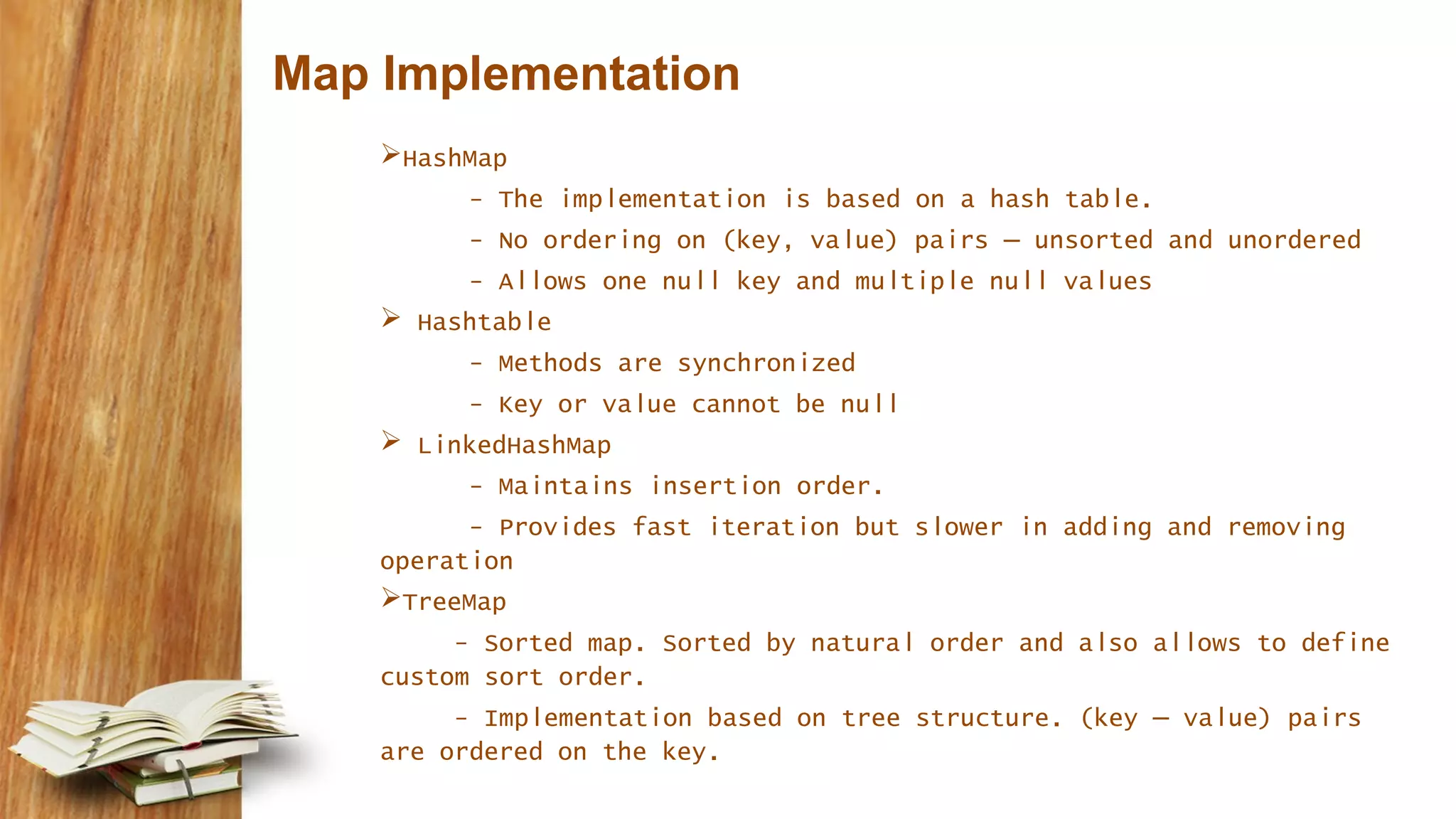
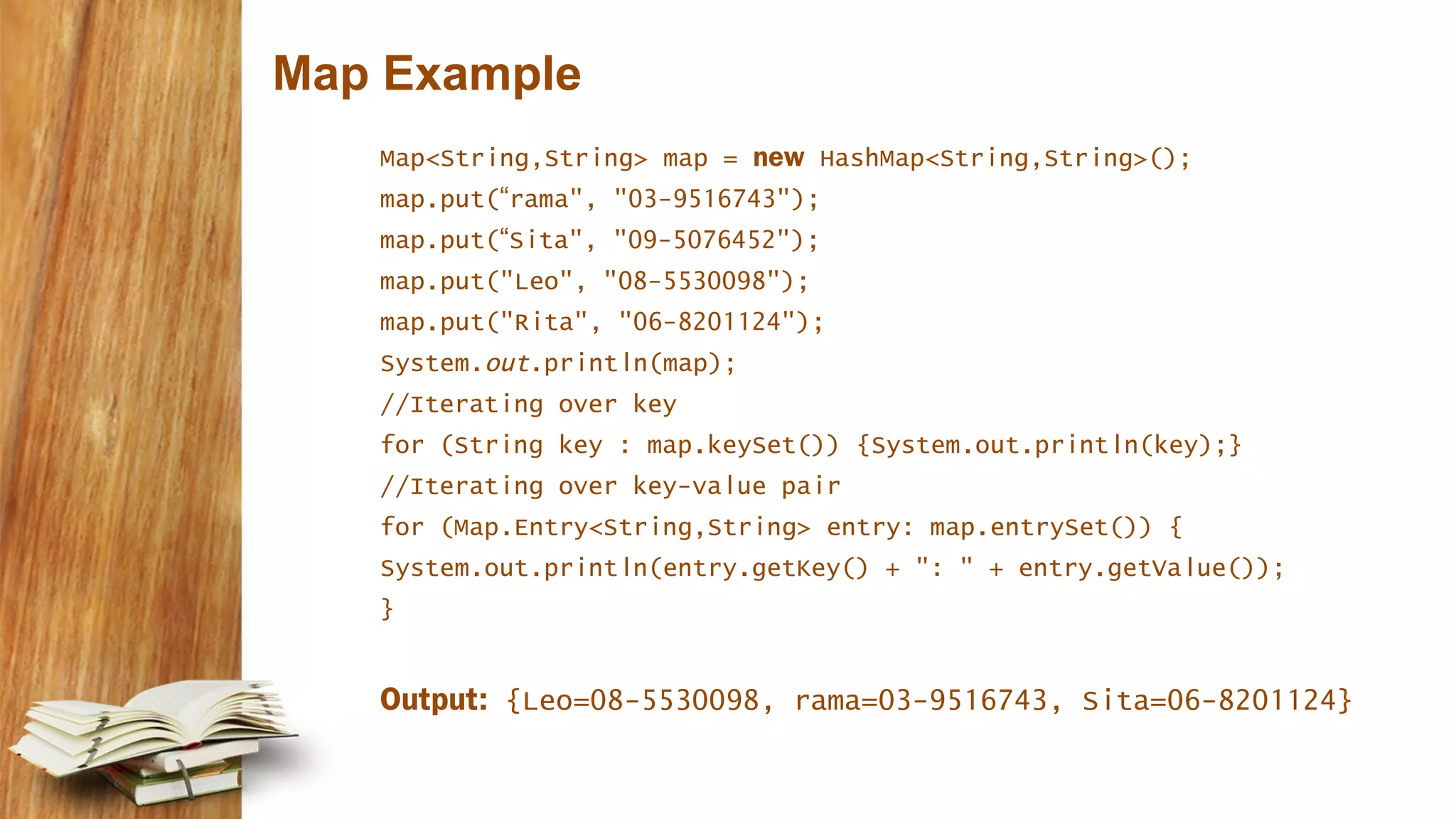
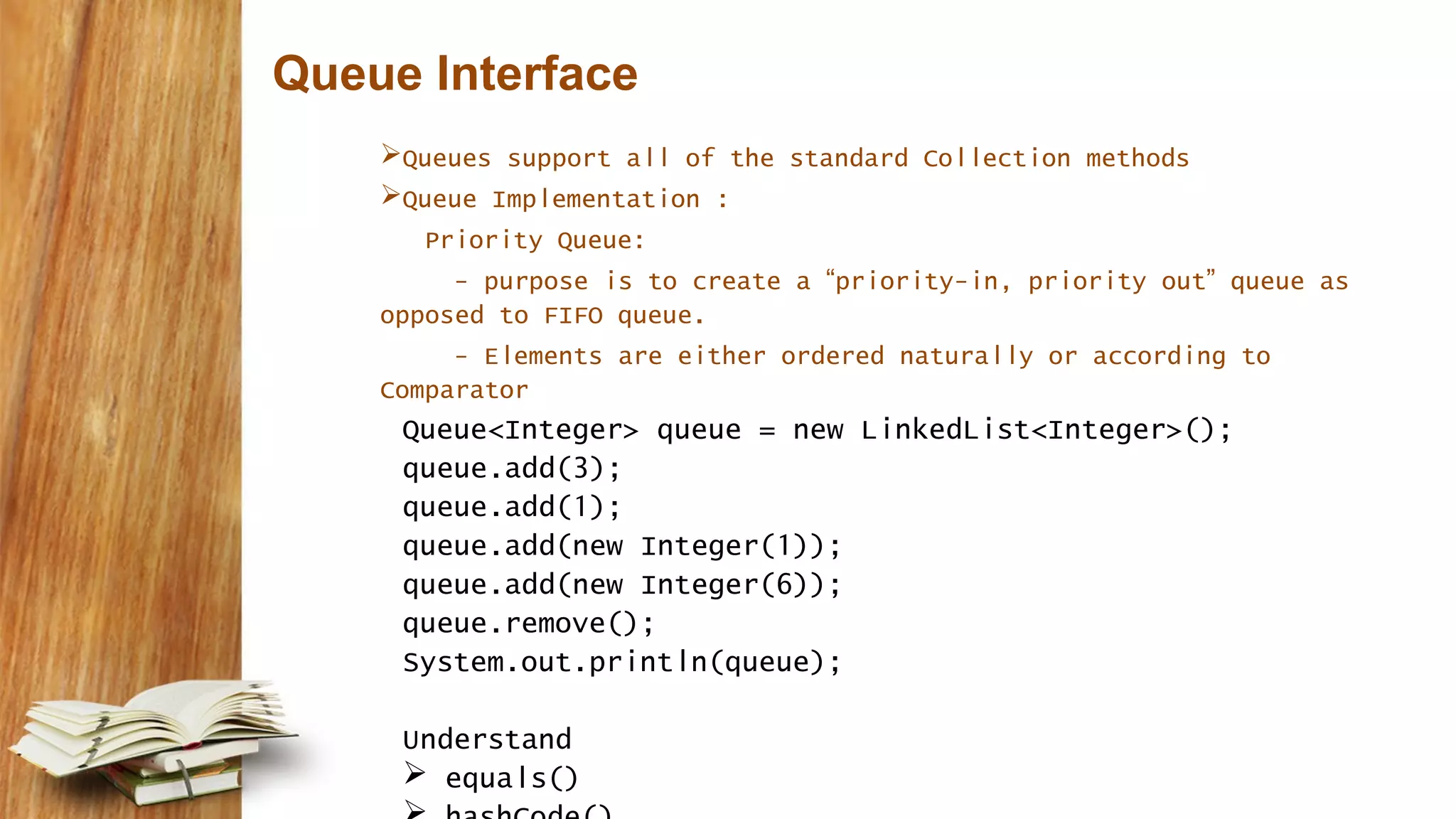
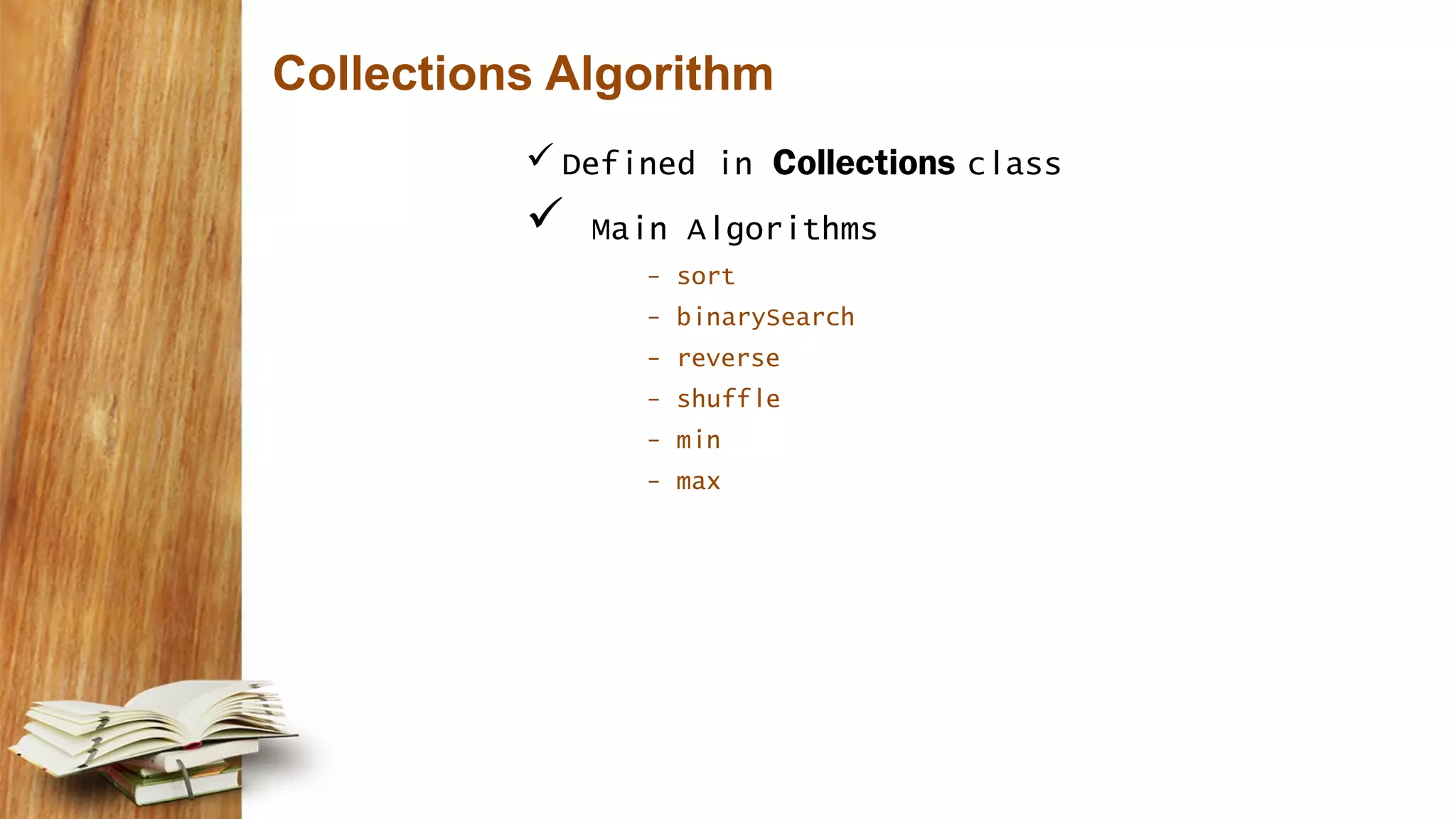
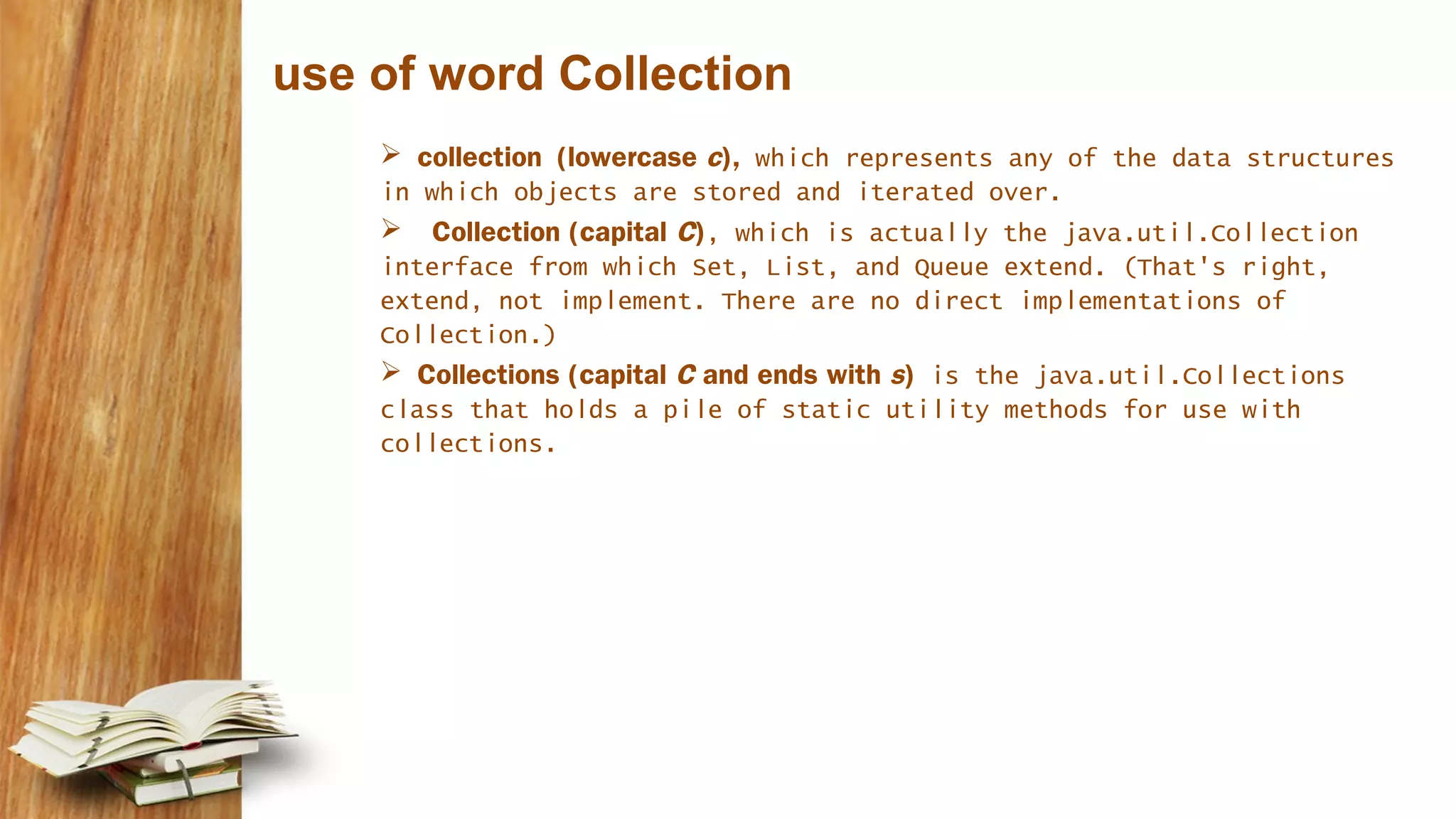
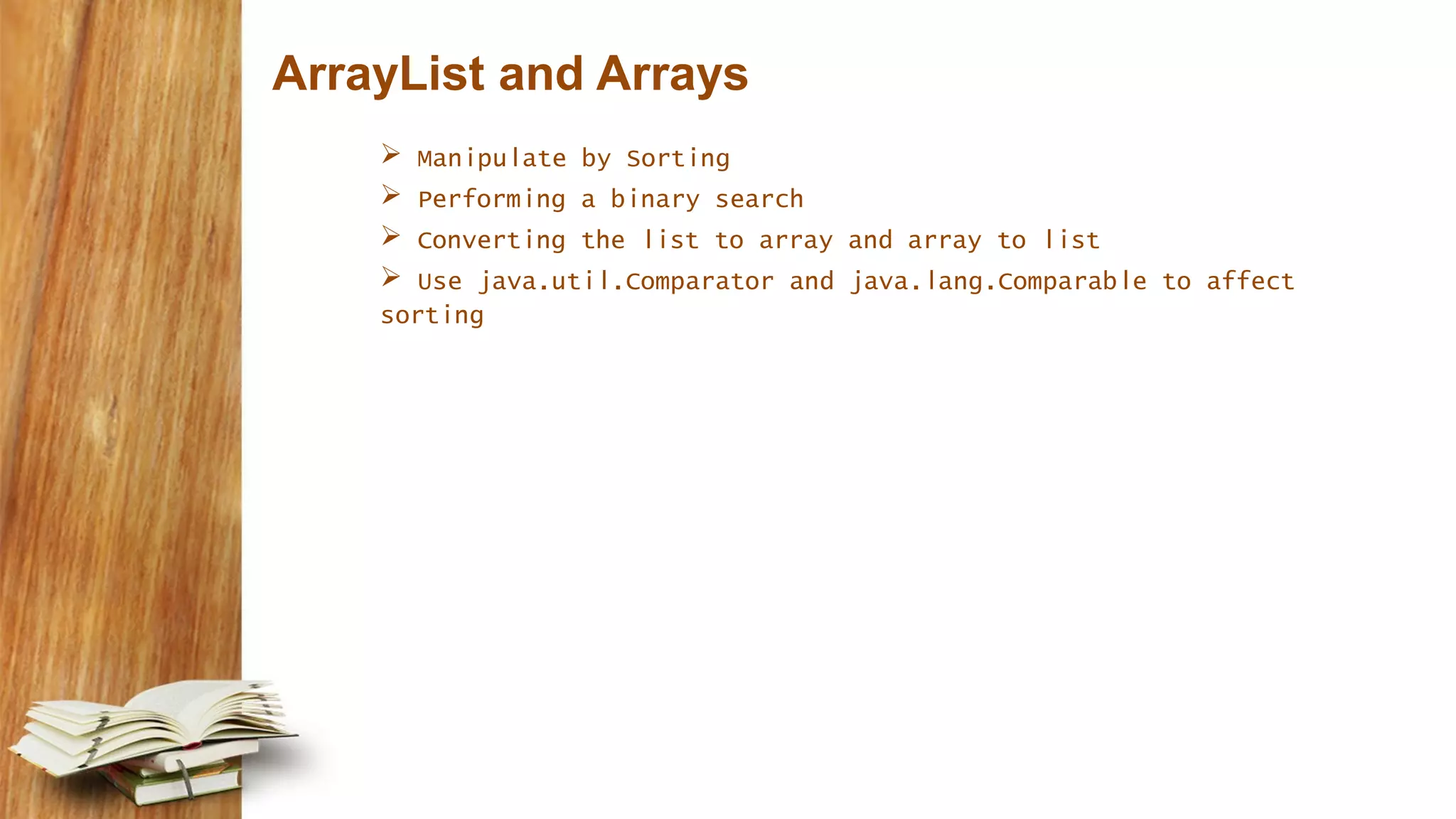
![ArrayList
Advantages over Array
- It can grow dynamically
- provides more powerful insertion and search mechanisms
than arrays
Ex:import java.util.*;
public class TestArrayList {
public static void main(String[] args) {
List<String> test = new ArrayList<String>();
String s = "hi";
test.add("string");
test.add(s);
test.add(s+s);
System.out.println(test.size());
System.out.println(test.contains(42));
System.out.println(test.contains("hihi"));
test.remove("hi");
System.out.println(test.size());
} }
Output : 3 false true 2](https://image.slidesharecdn.com/collections-151215161350/75/Java-Collections-Framework-22-2048.jpg)
![Sorting Collections
import java.util.*;
class TestSort1 {
public static void main(String[] args) {
ArrayList<String> stuff = new ArrayList<String>();
stuff.add("Denver");
stuff.add("Boulder");
stuff.add("Vail");
stuff.add("Aspen");
stuff.add("Telluride");
System.out.println("unsorted " + stuff);
Collections.sort(stuff);
System.out.println("sorted " + stuff);
}
}
Output:
unsorted [Denver, Boulder, Vail, Aspen, Telluride]
sorted [Aspen, Boulder, Denver, Telluride, Vail]](https://image.slidesharecdn.com/collections-151215161350/75/Java-Collections-Framework-23-2048.jpg)
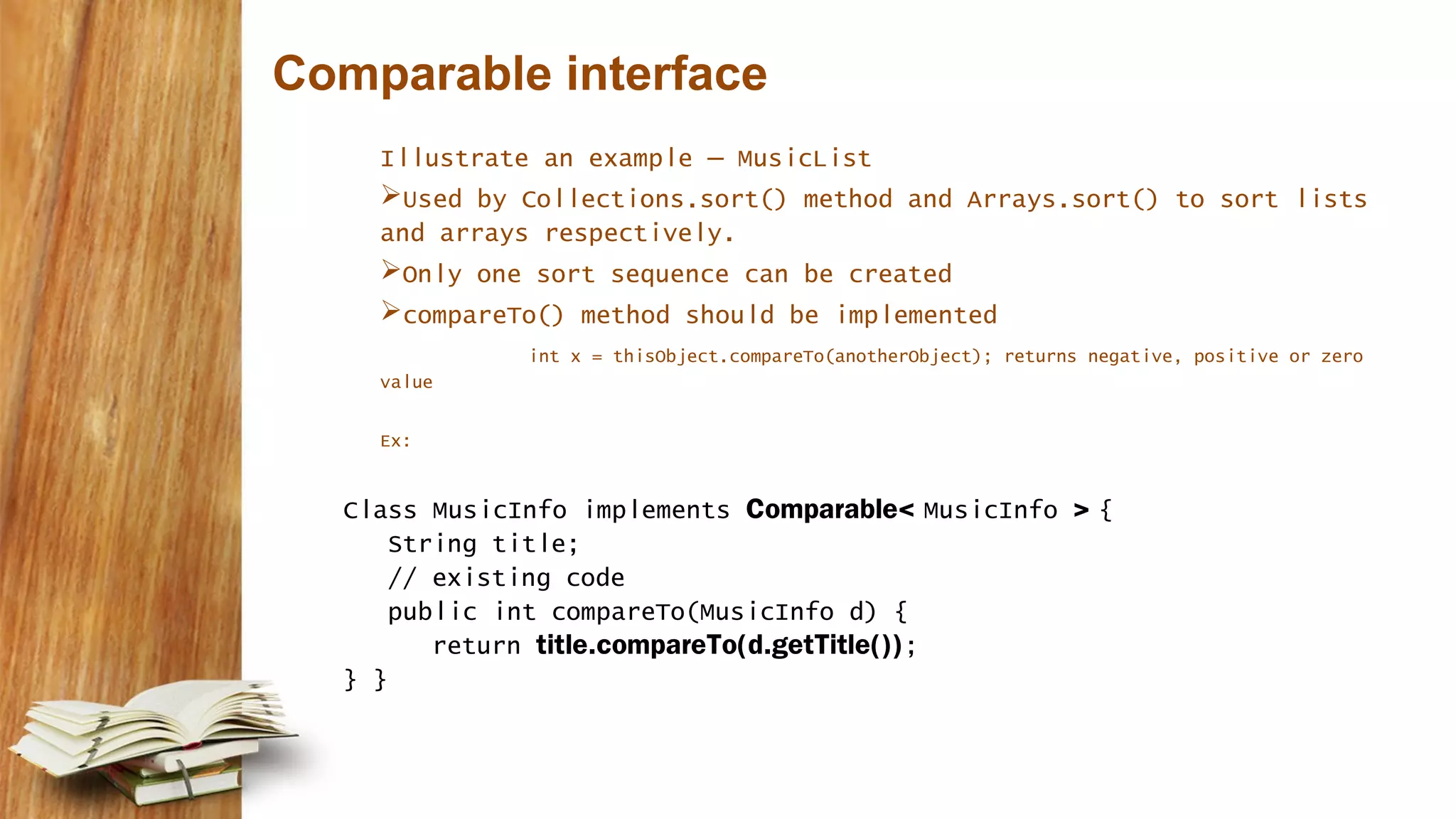

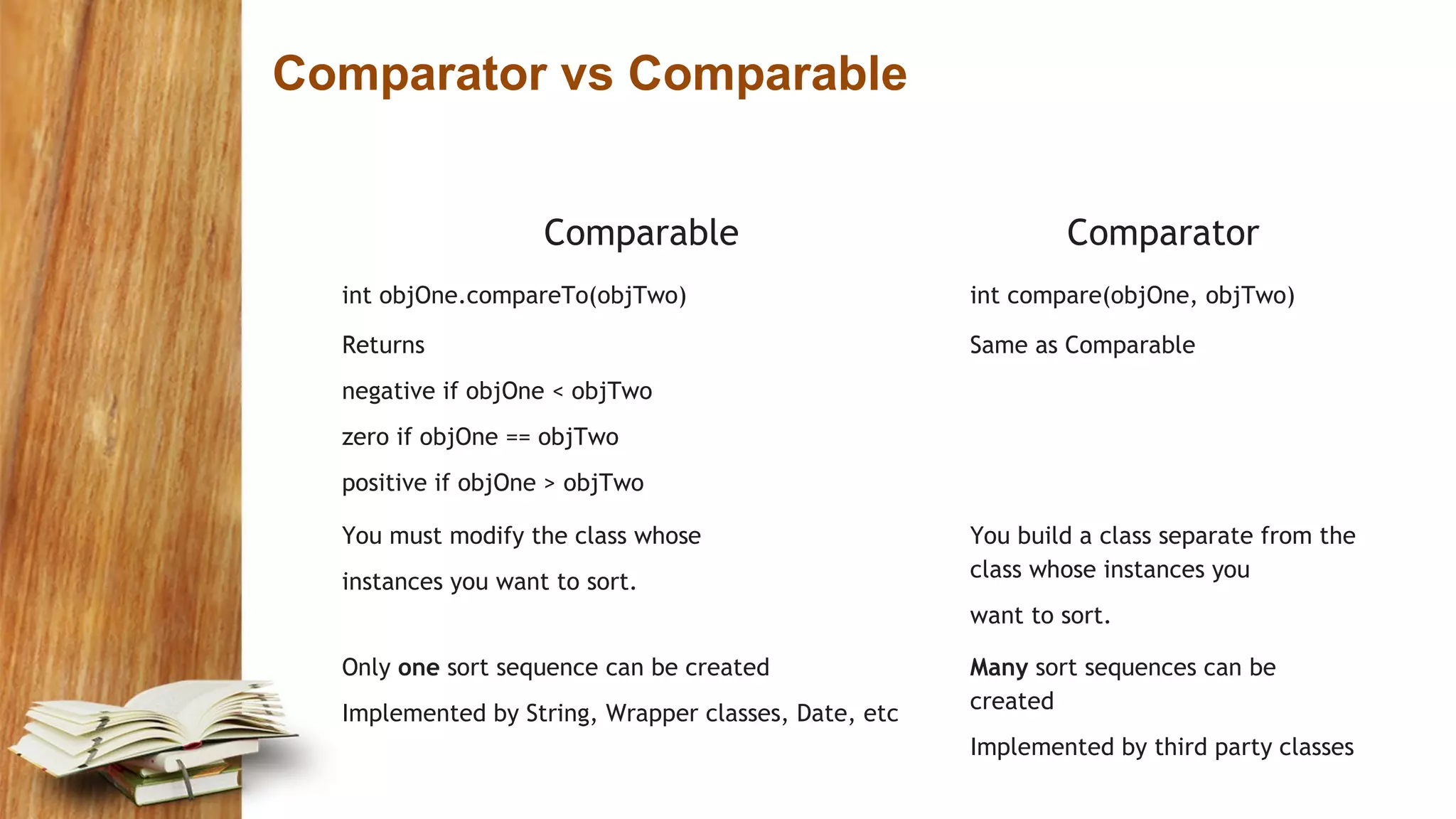
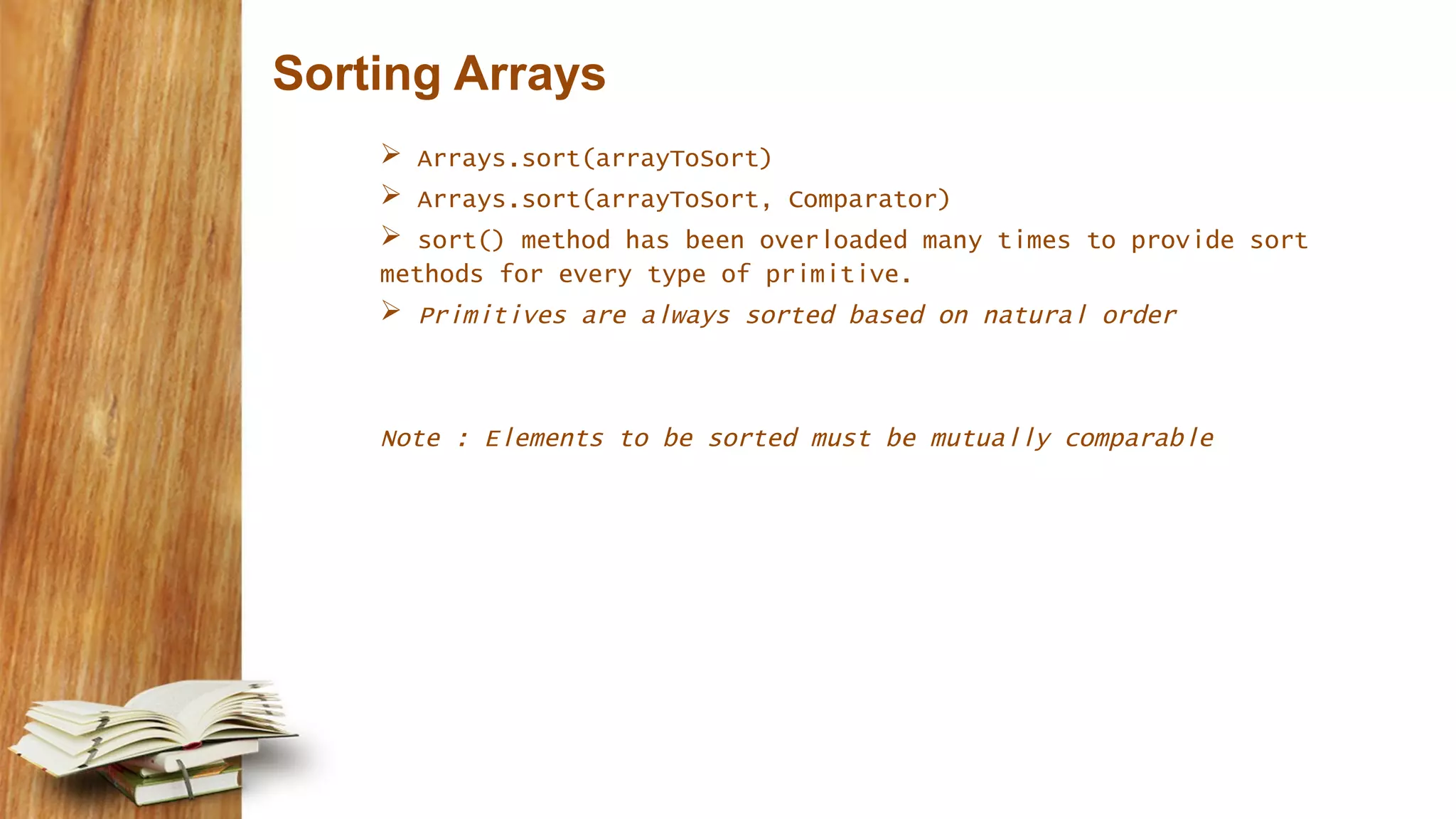
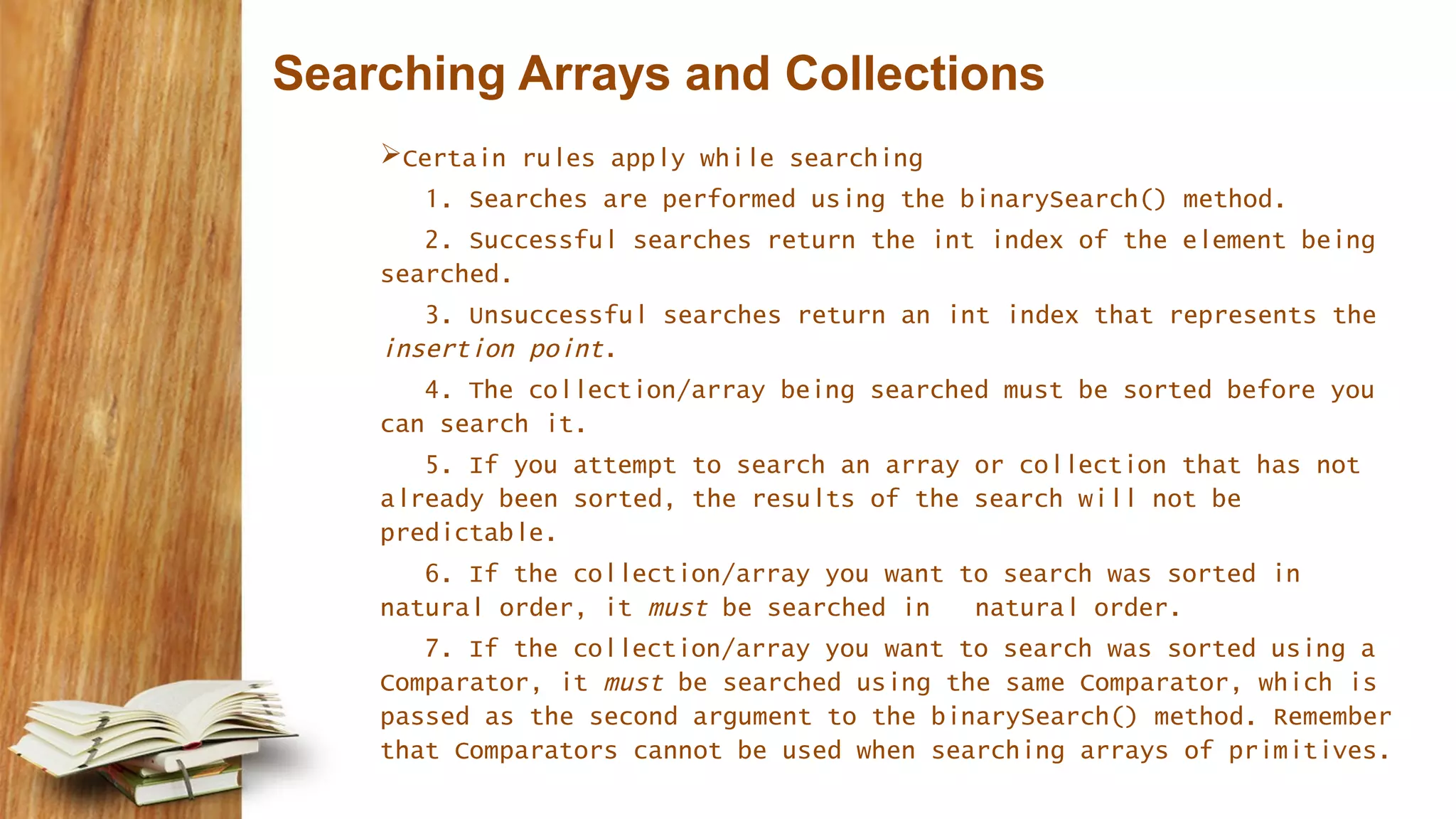
![Example for Binary Search
import java.util.*;
class SearchObjArray {
– public static void main(String [] args) {
– String [] sa = {"one", "two", "three", "four"};
– Arrays.sort(sa); // #1
– for(String s : sa)
– System.out.print(s + " ");
– System.out.println("none = "
– + Arrays.binarySearch(sa,"one")); // #2
– System.out.println("now reverse sort");
– ReSortComparator rs = new ReSortComparator(); // #3
– Arrays.sort(sa,rs);
– for(String s : sa)
– System.out.print(s + " ");
– System.out.println("none = "
– + Arrays.binarySearch(sa,"one")); // #4
– System.out.println("one = "
– + Arrays.binarySearch(sa,"one",rs)); // #5
– }
– static class ReSortComparator
– implements Comparator<String> { // #6
– public int compare(String a, String b) {
– return b.compareTo(a); // #7
– }
– }
– }
four one three two -> array
sorted alphabetically
one = 1 ->
search for element location 1
now reverse sort
two three one four -> reverse
sort
one = -1
one = 2 ->
search passing the comparator
Result](https://image.slidesharecdn.com/collections-151215161350/75/Java-Collections-Framework-29-2048.jpg)
![Converting Arrays – Lists -Arrays
The List and Set classes have toArray() methods
The Arrays class has a method called asList()
Ex:
String[] sa = {"one", "two", "three", "four"};
List sList = Arrays.asList(sa); // make a List
System.out.println("size " + sList.size());
System.out.println("idx2 " + sList.get(2));
sList.set(3,"six"); // change List
sa[1] = "five"; // change array
for(String s : sa)
System.out.print(s + " ");
System.out.println("nsl[1] " + sList.get(1));
This produces :
– size 4
– idx2 three
– one five three six
– sl[1] five](https://image.slidesharecdn.com/collections-151215161350/75/Java-Collections-Framework-30-2048.jpg)
![Example : List to Array
List<Integer> iL = new ArrayList<Integer>();
for(int x=0; x<3; x++)
iL.add(x);
Object[] oa = iL.toArray(); // create an Object array
Integer[] ia2 = new Integer[3];
ia2 = iL.toArray(ia2); // create an Integer array](https://image.slidesharecdn.com/collections-151215161350/75/Java-Collections-Framework-31-2048.jpg)
![Natural ordering
spaces sort before characters and that uppercase letters sort
before lowercase characters
String[] sa = {">ff<", "> f<", ">f <", ">FF<" }; // ordered?
PriorityQueue<String> pq3 = new PriorityQueue<String>();
for(String s : sa)
pq3.offer(s);
for(String s : sa)
System.out.print(pq3.poll() + " ");
This produces:
> f< >FF< >f < >ff<](https://image.slidesharecdn.com/collections-151215161350/75/Java-Collections-Framework-32-2048.jpg)
